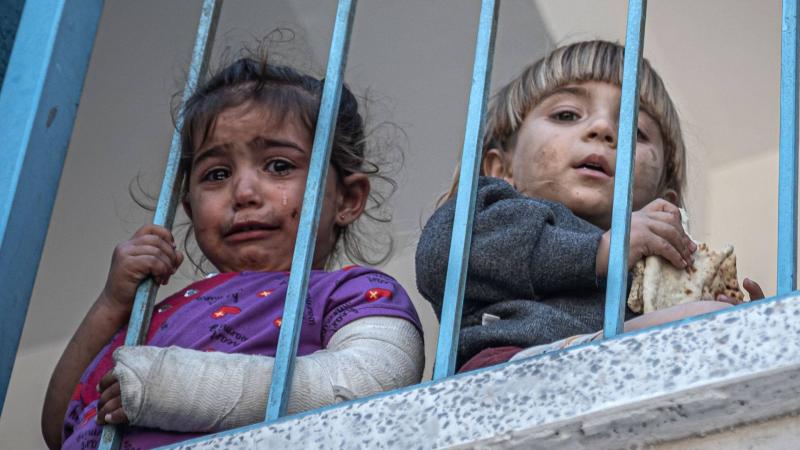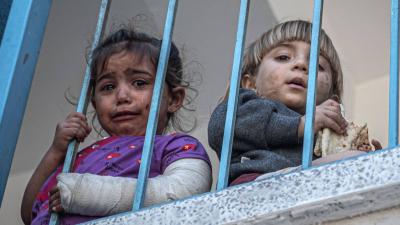Parents and psychologists in the Gaza Strip state that signs of trauma are more visible on children's faces in the Palestinian territory than ever before, following two weeks of heavy Israeli bombardment, with no safe place to hide from falling bombs and a slim chance of the attacks stopping. Children make up nearly half of Gaza's population of 2.3 million, living under near-constant bombardment, with many taking refuge in temporary shelters at United Nations-run schools after fleeing their homes with little food or clean water.
Israel is expected to launch a ground assault on Gaza soon in response to a cross-border attack by Hamas militants on southern Israel on October 7, which resulted in the deaths of more than 1,400 people and the abduction of 210 others.
**Symptoms of Trauma**
Psychologist Fadl Abu Hein from Gaza reports that children are showing severe symptoms of trauma, such as seizures, bedwetting, fear, aggression, anxiety, and an unwillingness to be away from their parents. According to the Health Ministry in the enclave, at least 4,385 people have died in Gaza so far, including more than 1,500 children, while 13,000 others have been wounded. The situation is exacerbated by the state of temporary shelters in UN schools, where over 380,000 people seek refuge in hopes of escaping the bombardment. Sometimes, as many as 100 people sleep in one classroom, necessitating continuous cleaning. There are minimal supplies of electricity and water, making the bathrooms extremely filthy.
**Fear of the Night**
Tahreer Tabesh, a mother of six taking shelter in one of the schools, stated that her children suffer greatly at night, often crying and unintentionally wetting themselves, mentioning that she doesn't have enough time to clean each child one by one. She added that they don’t feel safe in these schools either. The United Nations reports that these schools have been bombed multiple times, and Tabesh has witnessed several strikes hitting nearby buildings. She noted that her children jump in fear at the sound of a chair moving.
Dr. Abu Hein indicated that the lack of any secure place has created an atmosphere of fear and terror among the entire population, with children being the most affected. He noted that some children's reactions are immediate as they express their fears. He emphasized that while these children require immediate intervention, they might be in better condition than others who internalize their horror and trauma.
**Psychological Support**
One house in Khan Younis, in the south of the territory, shelters about 90 people, including 30 under the age of 18, and they are forced to sleep in shifts due to the cramped space. Ibrahim Al-Agha, one of the residents and an engineer, spoke about the effects of the attacks, stating that cries rise immediately upon hearing any explosion or nearby target hit, and they attempt to calm the young ones by telling them it's just fireworks. However, the older children understand what is happening. Al-Agha confirmed that they will need a lot of psychological support after this war ends.
The healthcare system in Gaza was already strained before the war started this month and is now on the brink of collapse. Mental health experts have long warned of the dire consequences already inflicted on children. A 2022 report by Save the Children concluded that the psychological and social well-being of children in Gaza was at "staggeringly low levels" after 11 days of fighting in 2021, leaving half of Gaza's children in need of support. Mental health experts in Gaza argue that there is no such thing as post-traumatic stress disorder because trauma in the enclave is ongoing, with repeated bouts of armed conflict extending over nearly two decades.
**Rescue Mission**
In the early hours of Saturday, after an Israeli airstrike destroyed a building in Gaza City, killing several members of the Abu Aker family, a large group of children stood among those watching rescuers search the rubble for survivors and bodies. While women nearby were crying and wailing, the children stood by watching with blank expressions.




